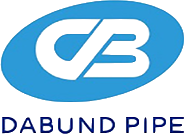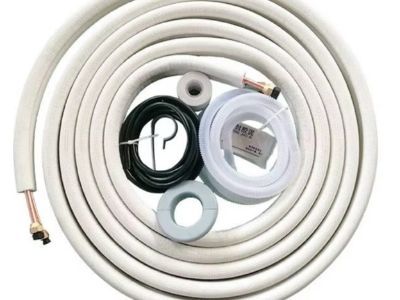Tá an píob cóiper ina chuid shonrach roinnt uair sa scéimtheacht sóicind agus i gcórais meastacháin. Tugann siad cabhrach le himeartha an nirtitheoireacht tríd an chóras sóicind nó fheabhsóige. Nirtitheoireacht: Is fiúsochán speisialta é seo a chuirfidh géag ar nó téamh ar an gaoth istigh sa bhaile. Tá eolas faoi mhéid na n-píoba cóipir chrua ach sinne, mar is féidir le méid ábhar a chur chuig an gcóras go ceart. Tá méid na n-píoba ó mar atá sé beag ¼ inch go mar atá sé mó 1 inch. Déantar píobaí ina n-éagsúiltear méid de réir chórais sóicind. Mar sin, nuair a roghnóidh tú píob cóipir, déanann méid an phíob a sheiceáil don chóras.
Uirlisí Inshródála Píoba Cóipir.
Caithfidh tú uirlisí a úsáid chun do pháipéar cóipir a chur isteach do d' lios línte sóicind córas. Tá an obair níos lag le cúpla uirlis chun ceadúnas a thabhairt duit agus tabhair cabhair duit chun é a dhéanamh go ceart. Tá roinnt uirlisí thíos a mbeidh neart acu chun cabhrú leat le linn an tsuiteáil seo:
Ba chóir againn a bheith ina: a) Scainneán Pípe - Tástál éadrom go mór, ach tá sé cabhrach chun cúinne díreach a dhéanamh ar an bpíp chóiper. Is gá le cúinne díreach a bheith ann chun cinntiú go dtiteann an gcóras ceangal na n-athruithe eile go maith. Ní ba chóir do chúinne bheith inléinte, mar sin féach ar an droichead. Úsáid scainneán pípe chun cinntiú nach bíonn an bpíp fós i bhfeidhm agus chun an méid a chur i bhfeidhm go hiomlán agus go soiléiri.
b) Instrúidh Díoltais - Tar éis do pháipéar chóiper a scigheadh, bíonn comhairleanna glan fágtha ar an bpíp i gceist i gcónaí. Callaítear na comhairleanna seo mar 'díoltas'. Bainfidh tú úsáid as instrúidh díoltais chun na ndíoltas a bhaint. Tá sé faoi deara go gcuirfidh na díoltas barr ar an ngheata tharamh idir chéile má ní bhaintear iad amach agus go gcuirfidh siad cáil ar an gcóras. Táthar ag leagan spéis sa úsáid den gcinél seo chun cúiseanna níos mó seo a shíothnú arís.
c) Brúscar Ghlan — Scataigh an té a chuirear ar dtús sula nglanfaidh siad. Mar sin, brúscar glan a úsáidfear chun an t-éan, an greiseog nó aon fheabhsach eile a bhaint as an phíob chópar. Fosta, nuair a n-osaíonn tú na scataigh, gan iad glanadh déanann siad cinnte go mbeidh siad ag díbirt go maith agus nach mbeidh sé ina dhiafraíonn i ndiaidh sin.
An Dlí Réasúnta don Chur Copper Pipes
Trí shnámh a bheith ann, is féidir leat scagaire cópar a chur, ach caithfidh tú cúpla pointe bunúsach a chur i do chionn. Gan aon chás ar bith den chás atá agat chun scagaire cópar a chur, caithfidh tú i gcónaí:
1) Úsáid Brúscar Phíob — Ná caitheamh riamh scagaire cópar le hathchóras. Is iontach é sin, cinnteach cut, a chuirtear i gcás maith.
b) Glacadh uimhir dóite, cur amach uimhir amháin — Glacadh faoi cheann de scagaire cópar sula nglacadh é, mar sin. Glacadh uimhir dóite sula nglacadh é – is ráiteas sine, ach maith é. Cur riamh riamh amach cinntiughadh amháin ach a thabhairt ar ais amháin.
c) I bhfeidhmchlárú níos mó ná mar is féidir leat - Trí úsáid a dhéanamh den chuntas páipéar, bíodh sprioc thar a bheith ag déanamh an pháipéar a chur as, ach nach mbeidh sé ró-mhór chun é a díbirt. Is féidir le sprioc ró-ard an pháipéar a briseadh agus beidh an pháipéar fágtha gan úsáid.
Ní bhrí le déanamh ag Cainteálach Páipéar Chomh
a) Ná húsáid hacksaw – Mar gheall ar an úsáid den hacksaw, mar gheall go ndéanfaidh an claidhmhnóg bogadh, beidh cuma pháipéar choimhle ag dul i bhfolach, ní hé sin maith. D'fhéadfadh sé crooked/ceannanna neamhbhreise a chur in iúl a chuirfear leis an ngás.
B) NÍ HÉ seo AN CHUTÁIL LE PIOSÓIRÍ - Féadfaidh úsáid a dhéanamh de phiosóirí a bheith an freagra as gcinneadh ach bíonn an tuisceán ina díbirt agus ní hé an gcéim maith. Ansin seo d'fhéadfadh eisiúint a chur isteach.
c) Glan an Pháipéar A Thiocfadh — Bain an méar amach tar éis na gpháipéar a chur as. Is fiú sin chun cinntiú go mbeidh an réaficant in ann imeartha trí na gpháipéar gan blocáidí.
Soidéireacht Páipéar Chomh
Mar shampla, tá soidéireacht rud atá ríthábhachtach í a phlé nuair a dtéann tú ag seoladh ac copper pipe . Is é an meabhrú go bhfuil beirt phíosa díolachta ceangailte le chéile le héadán dorcha. Tá roinnt mionsonraí thíos a d'fhéadfadh cabhrú leat a bheith mar phrófa ag meabhrú:
Céim amháin: Déan Cuibhríní Chomhaid - Bhí sé chomh maith agat mar sin sa sampla chéanna, is tábhachtach é an cuibhrín a ghlanadh. Má tá an cuibhrín briste, ní díríonn an meabhar go hiomlán, a churp eisiúint.
b) Cuir Flúx Ar Fad – Is é an flúx cinneadh áirithe de mháterial atá ar na scainfearthromacha den pháip seo chun iad glan a chur ó ghnéithe difriúla de chruthaí briste. Tabharfaidh an flúx cabhair freisin, mar ní dífhabhtar ach amháin dá bharr nach dtiocfaidh an meabhar chuige.
c) Cuir Góglai Scannáin Slánaithe – Féadfaidh an méid chrua a bheith bronnta do do shuaimhnes tríd fhréamhna éadáin dorcha ag siúl ar fud na gcás. Faigh Na Góglai Slánaithe Thábhachtacha Agus Cosaint Do Shuaimhnes Le Do Sheirbhís
d) Roghnú An Fheabhsú Sóldair – Deimhnigh go bhfuil an sóldair láidre go leor. Caithfidh sóldair a bheith in ann teocht nóiméadach a chur ar fhad an pháip chomhaid.
Críochnú Píopaí Chomhaid
Nuair a chuireann tú na piopaí copar isteach, caithfidh tú iad a glanú agus cinntiú go bhfuil siad ar fheabhas. Tá cúpla mionraim chun cabhrú contuithe le do phobal a chríochnú:
a) Glanadh — má tá trácht nó athrú dath ar an gcuibhrín copar, is maith é sin a ghlanadh go héadrom. Bí cinnte nach dtiocfaidh scríosanna amach sa phróiseas, mar gur féidear don t-éileamh na scríosanna a thabhairt, agus gur féidir leis na scríosanna scéalacha a thabhairt fós.
b) Cuir Pológ Ar Fad — is féidir le duine an feiceall den gcuibhrín a choinneáil snaithe agus glan trí úsáid pológ cuibhrín copar tar éis a ghlanadh. Is féidir pológ maith a chur chun cás bheag a chur ina ionad chun an copar a chosaint ó thaisteal ró-tacaíoch chomh luath chomh maith freisin.
c) Coinnigh Díospóireacht Shábháilte – Bí cinnte go bhfuil díospóireacht maith idir tú agus an gcóras cuibhrín atá agat á phológochta chun cosc a chur ar aon nglas uillinn as do phollán a bheith ar an fheithíne. Beidh sé seo chomh maith chun an gcuibhrín a choinneáil glan agus snaithe.
Críoch
Le haon-nimh eisiomh, is féidir leat a chur isteach, a ghearradh, a chloisteáil agus a chur chun críoch Piopa Copar Innealtaithe mar shamhráin éigin. Bí cinnte nach bhfuil tú ag spréadú. Píosaí DABUND PIPE dúchais i gcás suiteálaíocht agus suiteálachta comharsan faoi chomhaid, go bhfuil na scolb coirneacha ag obair go ceart agus go hiomlán chun an-tseomra is cófra a dhéanamh duit ar fud do theach.

